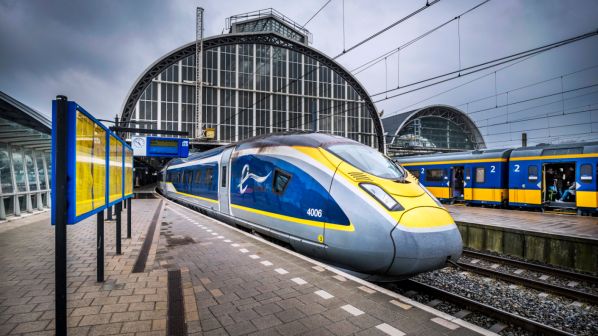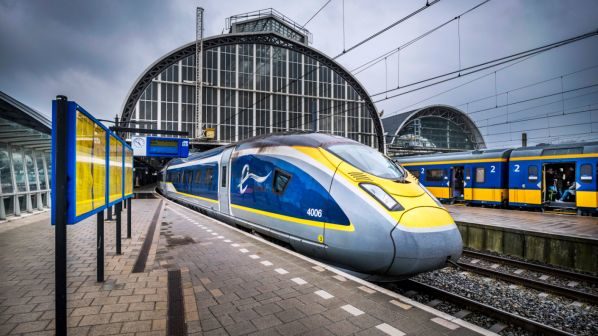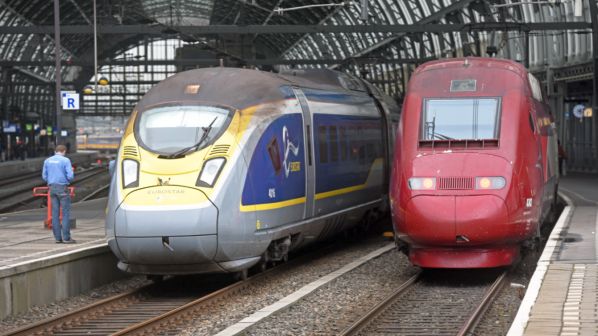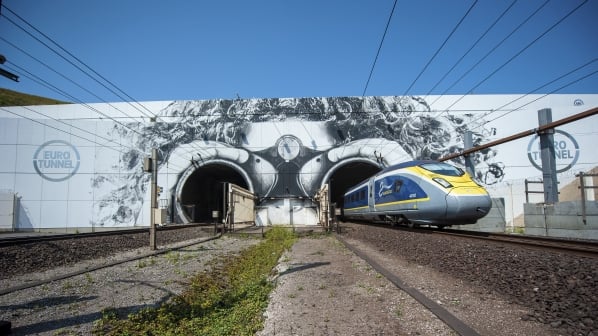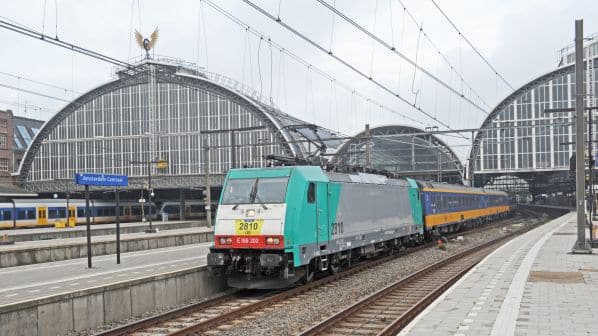GETLINK CEO, Mr Yann Leriche, announced on December 14 that the operator of Channel Tunnel is now working to double the number of high-speed services from London within the next 10 years, having reduced the time required to bring new routes to market to five years.
Leriche contrasted this figure with the 10 years that it took to introduce Eurostar services to Amsterdam. Getlink subsidiary Eurotunnel completed market studies confirming the viability of the route in 1999 but Eurostar did not launch its first train until 2018.
“The time to market was too long,” he said. The size of the potential market was not the problem, he added, noting that the 1 million passengers carried in 2023 is only one-third of a potential market of 3 million passengers a year.
Work to provide larger check-in and border control facilities at Amsterdam Central station, due to start in July 2024 and expected to take six months to complete, should enable Eurostar trains to carry their full complement of passengers.
According to Leriche, the time taken to get to market is so long that new services through the Channel Tunnel are not a viable proposition if the potential operator relies on private finance. “That is why we have no other operator,” he said.
To encourage new operators, and make it simpler for Eurostar to introduce new routes as it works to double traffic, Leriche was happy to announce that Getlink had now reduced the time to market by half.
“Five years is viable,” he said, before outlining how Getlink has achieved this by concentrating on four areas, the first being to identify new destinations by means of market research.
Standards
Getlink has also been working with the European Union Agency for Railways (ERA), the French rail safety regulator EPSF and its British counterpart the Office of Rail and Road (ORR) to revise standards applying to the Channel Tunnel so that a wider range of rolling stock may operate through it.
In addition, Leriche said the company has worked with rolling stock manufacturers to ensure that these revised standards are incorporated in their standard, interoperable products, enabling Channel Tunnel-specific safety requirements such as greater fire resistance to be added at “very minimal cost.”
Asked by IRJ if this meant that any train compliant with the European TSI for high-speed trains could operate through the Channel Tunnel, Leriche replied “almost, not 100%.” He added that the trains ordered by aspiring new entrant Evolyn from Alstom would be to a standard design with additional fire protection.
The fourth strand of work to cut time to market has seen Getlink preparing the ground for new services by working with infrastructure managers Infrabel, Swiss Federal Railways (SBB), DB Network, SNCF Network and HS1 Ltd in Britain on securing train paths and providing the secure check-in facilities that will be needed at stations.
Asked if sufficient capacity would be available to accommodate new entrants at the London terminus, Leriche answered “the space will be found at St Pancras through a new entrance.”
“There is space, there is potential,” he said, adding that Getlink was working very closely with station operator HS1 Ltd.
“We can say to new entrants ‘the work has been done, and in five years you will be operating.’”
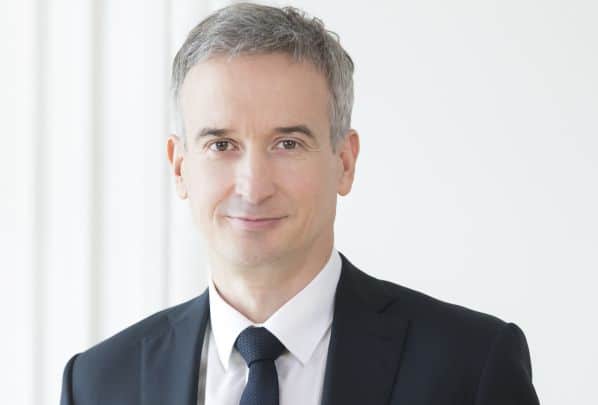
Getlink’s development work has concluded that a journey time of 4 hours or less is required to shift 50% or more of airline traffic to greener, high-speed rail. Amongst the potential new routes development is most advanced on London - Cologne - Frankfurt, where potential paths and station options have been identified.
The total airline market here is 4 million passengers a year, and with a journey time of 4 hours to Cologne and 5 hours to Frankfurt, Getlink believes that a high-speed service of four to six trains a day in both directions could attract 2 million passengers a year.
This would capture 40% of the air-rail market and deliver what Leriche described as a “phenomenal” 97% reduction in CO2 emissions per passenger. “The demand is there,” he said.
Development work is less advanced for a London - Geneva service where current airline traffic is 2.5 million passengers a year. With a journey time of 5h 30min and two to three return services a day, high-speed rail would achieve a 30% market share, carrying 1 million passengers a year and cutting CO2 emissions per passenger by 95%.
Less developed are potential routes from London to Basel and Zurich, to Bordeaux, and to Lyon and Marseille, where Getlink has completed market surveys but has yet to start or complete work on paths and stations.
Incentive
To support new routes, which according to one Getlink insider would cost a new entrant €1bn to launch, Leriche also announced that Getlink would be making a total of €50m available from 2025 to 2030 under the Eurotunnel Incentive for Capacity Additions (ETICA) programme.
The programme is intended to help meet start-up costs for activities such as marketing and communications while traffic builds up. ETICA will have provided Eurostar with €9m for its London - Amsterdam service by the end of 2023, rising to €23m in 2030, according to Getlink.
“The attractiveness of the open-access model and the impetus driven by Eurotunnel as infrastructure manager to develop new destinations are key factors in the growth of low-carbon mobility between Britain and continental Europe,” Leriche said.
